Elliott Wave Strategy is a structured method analyzing market movements post-1929 crash by Ralph Nelson Elliott. Market patterns consist of impulse waves aligned with primary trends and corrective waves moving against trends. Understanding these waves aids investors in predicting market behavior. Entry at Wave 3 for strong trends, exit at Wave 5 to secure profits. While complex, mastering this strategy can enhance market analysis. By delving further into Elliott Wave Theory, beginners can gain valuable insights for making informed investment decisions.
Elliott Wave Theory Overview
The Elliott Wave Theory, a cornerstone of technical analysis in financial markets, was conceived by Ralph Nelson Elliott in response to the tumultuous aftermath of the 1929 stock market crash. This theory revolves around the concept of market movements being comprised of repetitive patterns known as waves.
These waves are categorized into two main types: impulse waves and corrective waves. Impulse waves, aligning with the primary trend, consist of five sub-waves that move in the direction of the overall market trend. On the other hand, corrective waves, moving against the trend, consist of three sub-waves that aim to correct the preceding impulse waves.
Historical Background and Principles
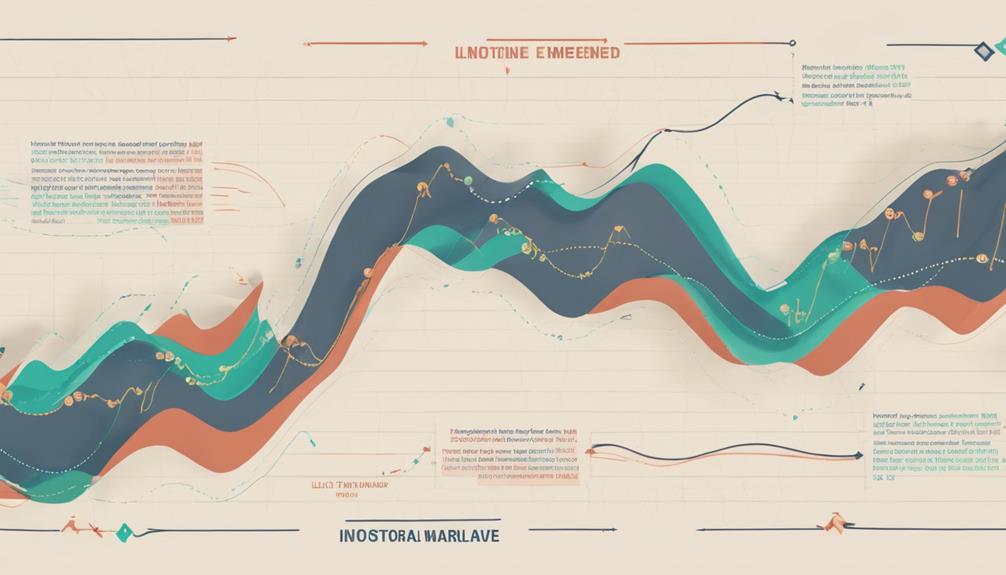
Ralph Nelson Elliott's development of the Elliott Wave Theory in the 1930s laid the foundation for a systematic approach to understanding market behavior.
The theory's core principles, rooted in human psychology and economic influences, provide a structured framework for analyzing repetitive patterns in market movements.
Exploring the historical origins and key figures behind the theory offers valuable insights into the principles guiding Elliott Wave analysis.
Wave Theory Origins
Originating in the 1930s through the meticulous research of American accountant Ralph Nelson Elliott, the Elliott Wave Theory has since become a cornerstone of technical analysis in financial markets.
Elliott, in collaboration with Charles J. Collins, introduced the theory in a 1938 book, fundamentally changing how market behavior is understood. The theory posits that market movements are not random but rather influenced by human psychology, market sentiment, and a natural inclination towards balance.
Elliott Wave Theory classifies waves into two main categories: Impulse Waves, which follow the primary trend, and Corrective Waves, which move against the trend.
Today, investors worldwide rely on this theory for its structured approach to analyzing and predicting market trends with a focus on wave patterns and market psychology.
Core Principles Overview
With roots in the early 20th-century financial landscape, the Elliott Wave Theory has emerged as a pivotal framework for understanding market dynamics and forecasting trends. Developed by Ralph Nelson Elliott in the 1930s, this theory categorizes market movements into Impulse Waves, which follow the trend, and Corrective Waves, which move against the trend.
Impulse Waves are composed of five waves, while Corrective Waves exhibit patterns such as A-B-C corrections. The Elliott Wave Theory posits that market prices adhere to natural laws of balance, influenced by human psychology and economic factors.
This approach has become a fundamental tool for technical analysis, empowering thousands of investors worldwide to make educated market predictions based on wave patterns and market behavior.
Key Historical Figures
Developed by an American accountant in the 1930s, the Elliott Wave Theory has since become a cornerstone in the field of market analysis and forecasting. Ralph Nelson Elliott, the mastermind behind the theory, collaborated with Charles J. Collins to publish a book on Wave Theory in 1938.
The Elliott Wave Theory categorizes market movements into Motive Waves and Corrective Waves, with Impulse Waves aligning with the trend and Corrective Waves going against it. This theory suggests that market trends are not random but follow a natural order governed by a set of rules.
It is widely embraced by investors and portfolio managers globally for its insightful approach to understanding market behavior and predicting future price movements with more precision.
The Five Waves Explained
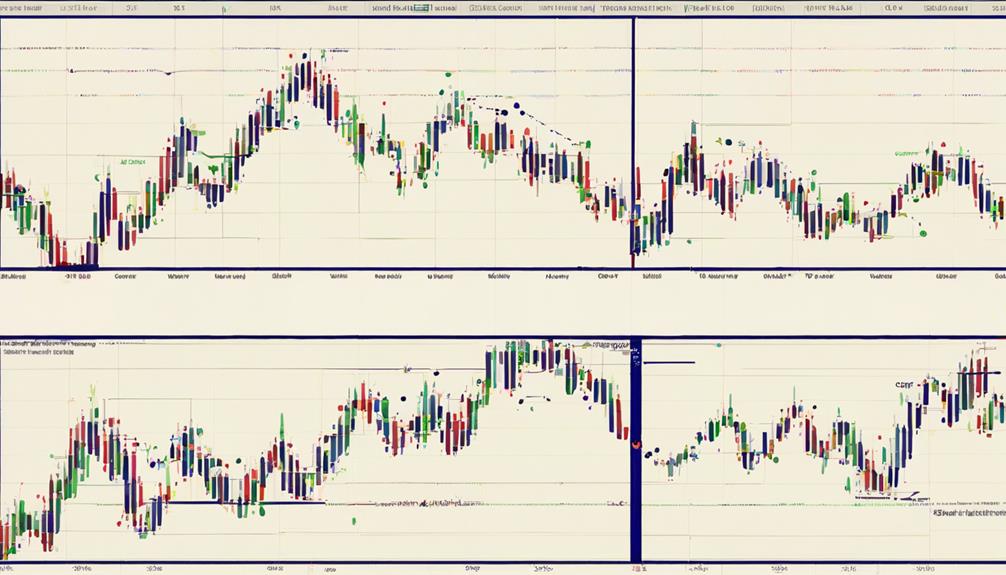
How are the five waves of the Elliott Wave Theory structured and what do they signify in market analysis?
The Elliott Wave Theory consists of five waves that help traders and analysts understand market trends and predict future price movements.
These waves are categorized into three impulse waves (Wave 1, Wave 3, and Wave 5) that move in the direction of the trend and two corrective waves (Wave 2 and Wave 4) that move against the trend.
Wave 1 initiates the pattern with an upward movement, followed by a corrective Wave 2.
Wave 3 is often the most powerful and extended wave, surpassing the peak of Wave 1. Wave 4 corrects the upward movement of Wave 3, setting the stage for the final upward push in Wave 5.
Corrective waves consist of Wave A as a downward move, Wave B as a retracement, and Wave C as another downward move.
Understanding these five waves is essential for applying Elliott Wave analysis to market trends and making informed trading decisions.
Impulse Wave Details
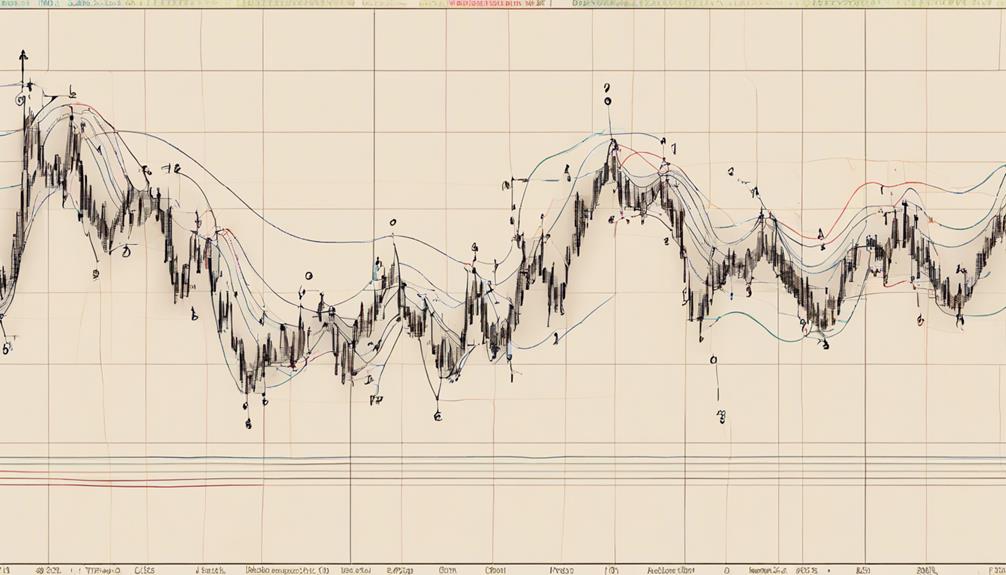
Impulse waves, integral to the Elliott Wave Theory, showcase the directional movement of a trend through a sequence of five sub-waves with distinct characteristics.
- Five Sub-waves: Impulse waves consist of five sub-waves, labeled 1, 2, 3, 4, and 5, each playing a specific role in the wave sequence.
- Third Wave Significance: The third wave within an impulse wave is often the longest and strongest, indicating the highest momentum in the trend.
- Directional Movement: Impulse waves move in the direction of the prevailing trend, illustrating the market's underlying strength or weakness.
- Trading Opportunities: Understanding impulse waves is essential for traders as it helps identify trend strength and potential trading opportunities based on the wave patterns.
Corrective Wave Insights
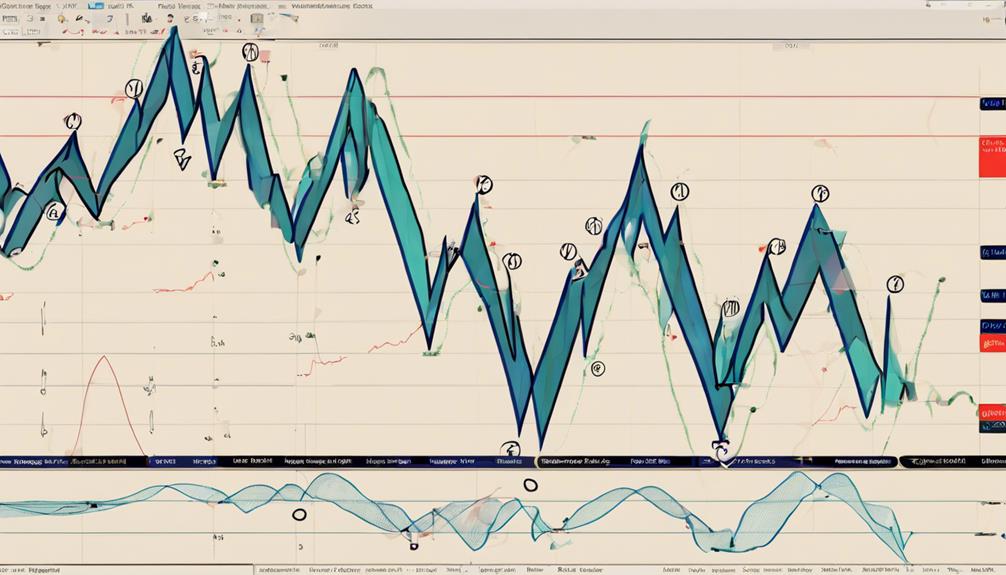
In the Elliott Wave Theory, Corrective Wave Insights provide traders with essential knowledge on the pattern's three sub-waves – Wave A, Wave B, and Wave C – which aim to counteract preceding impulse waves and offer strategic trading opportunities.
Wave A marks the initial downward movement in a corrective pattern, signaling the start of the correction against the previous trend. Following Wave A, Wave B emerges as a retracement, typically not surpassing the origin point of Wave A. Wave B serves as a temporary counter-trend move before the final downward thrust of Wave C, which often extends beyond the termination point of Wave A.
These corrective waves play an important role in market analysis as they provide traders with opportunities to enter or exit positions based on the anticipated price movements. Understanding the characteristics of Corrective Waves A, B, and C is essential for traders seeking to effectively navigate and capitalize on market fluctuations.
Applying Theory to Trend Analysis
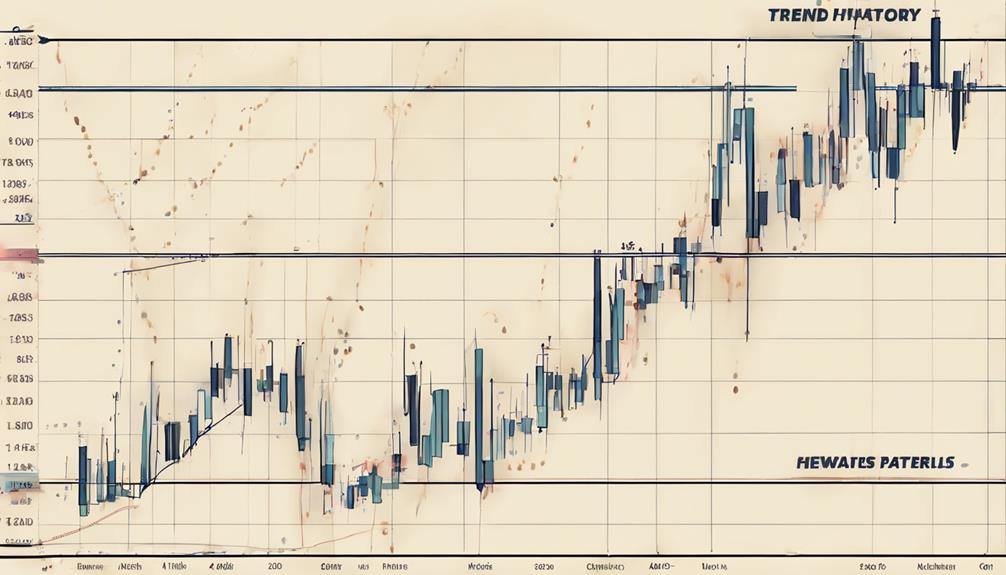
Applying the principles of Elliott Wave Theory to trend analysis involves identifying and interpreting patterns of five consecutive waves to determine potential market trends. To effectively apply this theory, traders should consider the following key points:
- Impulse Waves vs. Corrective Waves: Understanding the distinction between Impulse Waves, which move with the trend, and Corrective Waves, which move against it, is vital for accurate wave count identification.
- Fibonacci Retracement Levels: Wave two typically retraces between 50% and 61.8% of wave one in Elliott Wave strategy, providing important levels to watch for potential trend reversals.
- Validating Wave Counts: Correct application of Elliott Wave rules is essential to validate the five-wave move, confirming the accuracy of the trend analysis.
- Utilizing Technical Indicators: Incorporating tools like Fibonacci retracement levels and technical indicators such as Relative Strength Index (RSI) and Moving Average Convergence Divergence (MACD) can help confirm wave counts and enhance the overall analysis process.
Market Trends Identification

Identifying market trends through Elliott Wave Strategy involves recognizing key points such as:
- Spotting trend reversals
- Confirming trend continuation
By understanding these points, traders can anticipate potential shifts in market direction and make informed decisions accordingly.
The ability to distinguish between impulse waves signaling the trend's strength and corrective waves indicating temporary retracements is essential for successful trend identification.
Spotting Trend Reversals
Effective recognition of trend reversals in market trends using Elliott Wave theory involves a keen understanding of specific wave patterns and wave counts to pinpoint potential turning points.
- Wave Patterns: Learning to identify various wave patterns, such as zigzags, flats, and triangles, is essential for spotting trend reversals accurately.
- Corrective Waves: Recognizing the completion of corrective waves is vital as they often indicate a potential trend reversal in the market.
- Technical Indicators: Utilizing technical indicators like Relative Strength Index (RSI) and Moving Average Convergence Divergence (MACD) can provide additional confirmation of trend reversals.
- Impulse Waves: Understanding the relationship between impulse waves and corrective waves is key in effectively spotting trend reversals in market trends.
Confirming Trend Continuation
Analysis of wave patterns in Elliott Wave theory is essential for traders seeking to confirm trend continuation in market trends. By identifying impulse and corrective waves, traders can determine the strength and direction of a trend, aiding in decision-making for entering or exiting positions.
Understanding wave patterns like impulse waves and corrective waves is vital for confirming trend continuation and evaluating market trends effectively. This analysis helps traders gauge the trend's strength and longevity, providing valuable insights for strategic trading.
Utilizing Elliott Wave theory allows traders to spot opportunities within trends and make informed choices based on market dynamics.
Entry and Exit Points Determination
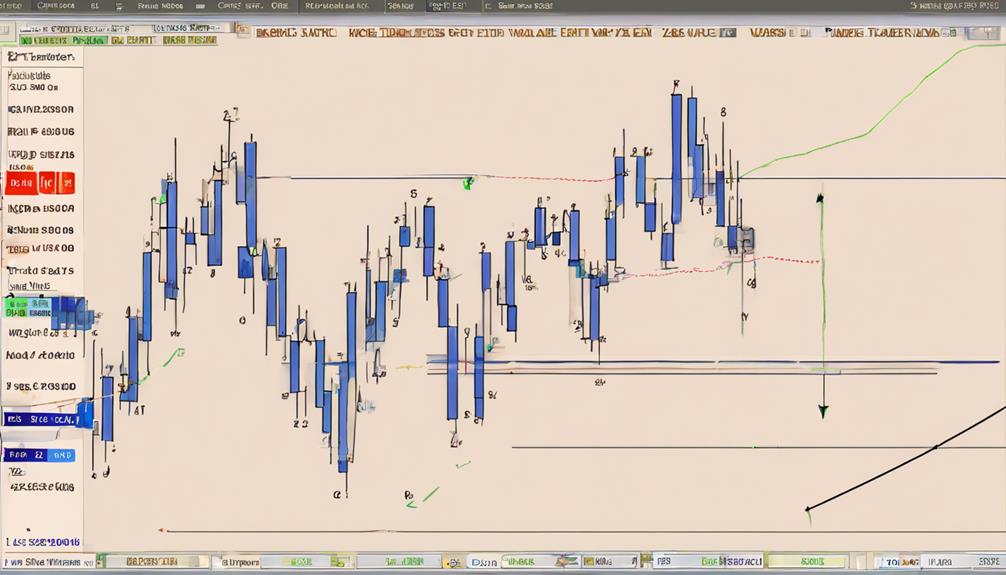
When implementing the Elliott Wave strategy, determining entry and exit points is essential for successful trading. This strategic approach relies on specific wave patterns to forecast market movements accurately. To optimize trading decisions, traders should focus on the following key points:
- Entry Points: Typically, entry points in the Elliott Wave strategy are identified at the beginning of Wave 3, known as the strongest trending wave. Traders often seek confirmation signals such as breakouts or increased volume to validate their entry points effectively.
- Exit Points: Exit points in Elliott Wave trading are commonly set at the conclusion of Wave 5, where the trend is anticipated to exhaust itself. Setting clear exit points is critical for locking in profits and avoiding potential reversals.
- Trailing Stop Losses: Utilizing trailing stop losses can help traders secure profits while allowing the trend to develop. This risk management technique enables traders to protect gains in case of a trend reversal.
- Fibonacci Extension Levels: Identifying key Fibonacci extension levels can assist traders in determining optimal exit points to maximize profits in Elliott Wave trading. These levels act as potential price targets based on the wave structure, offering valuable insights for setting exit strategies.
Criticisms and Limitations
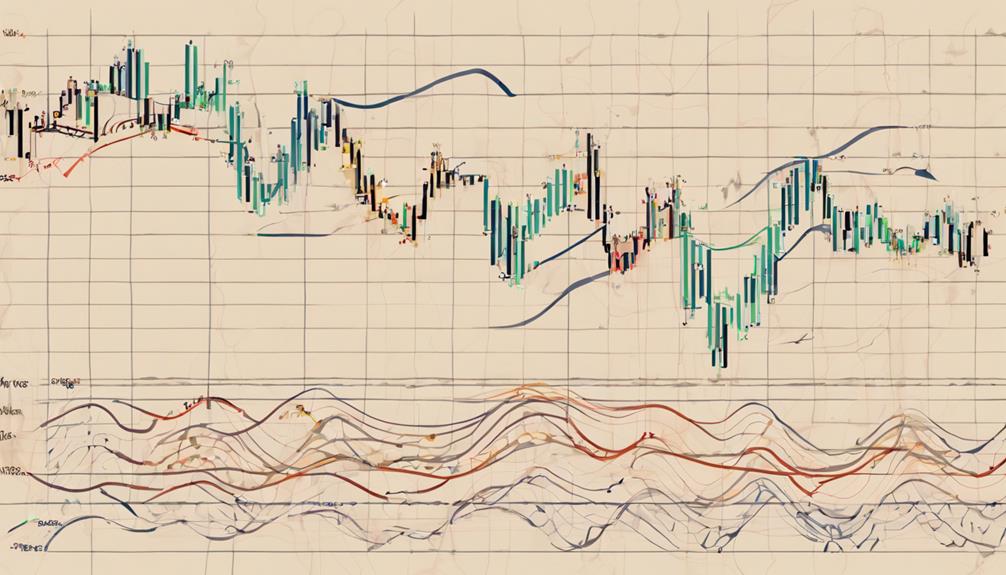
Critiques of the Elliott Wave Theory stem from concerns regarding its application in real-world trading scenarios and the challenges posed by market unpredictability. Some practitioners argue that criticism of the theory is often based on misunderstandings, emphasizing its intricate nature and the possibility of selective data interpretation. However, academics highlight that market unpredictability can hinder consistent results when utilizing the Elliott Wave Theory. The process of mapping wave counts across various timeframes proves to be complex in real-world market applications. The success rate of straightforward wave counts in trading using this theory is approximately 50%, indicating a significant margin for error. Challenges in employing the Elliott Wave Theory include navigating market ambiguity and comprehending the intricate wave patterns that form the basis of the theory.
| Criticism | Description | Implications |
|---|---|---|
| Complexity | Elliott Wave Theory is intricate | Potential for misinterpretation |
| Market Unpredictability | Poses challenges for consistent results | Hinders accuracy in predictions |
| Wave Patterns | Understanding complex wave patterns | Requires in-depth knowledge |
Challenges in Real-World Application

Mastering the complexities of real-world markets poses significant challenges for traders implementing the Elliott Wave Theory due to the inherent unpredictability and the intricate nature of wave interpretation. When applying the theory in real-world scenarios, traders encounter various challenges that affect the success rate of their analyses:
- Market Unpredictability: The dynamic nature of financial markets makes it challenging to accurately predict and map wave counts, leading to inconsistencies in applying the Elliott Wave Theory effectively.
- Wave Interpretation Complexity: The intricate process of interpreting waves on different timeframes adds complexity, making it difficult for traders to consistently identify and follow wave patterns.
- Low Success Rate: Real-world trading scenarios show that a straightforward wave count strategy has an average success rate of around 50%, highlighting the difficulty of achieving consistent results.
- Selective Data Interpretation: Traders often face challenges in selectively interpreting data to fit wave counts, impacting the accuracy and reliability of their Elliott Wave analyses.
Alternative Market Analysis Approaches
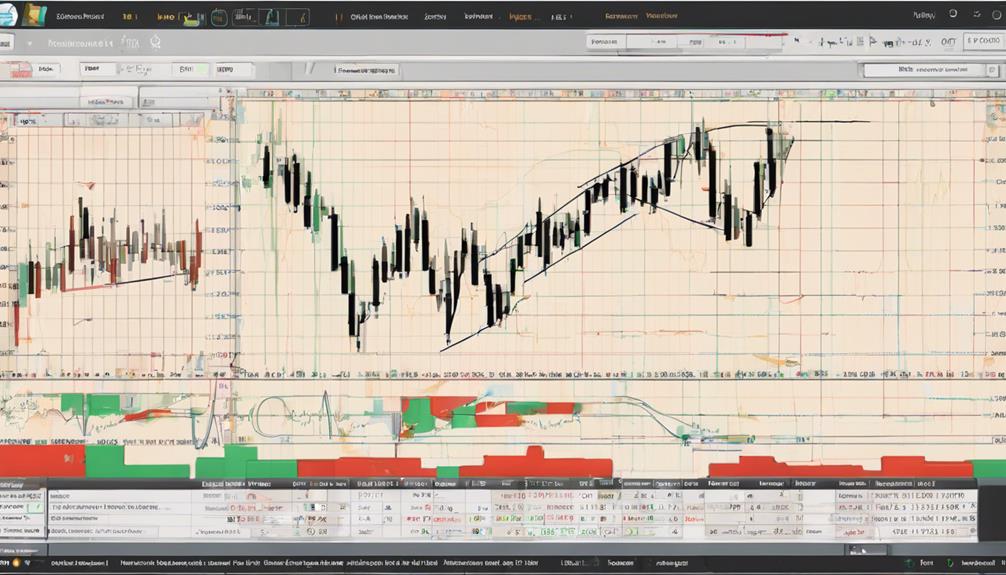
Alternative market analysis approaches offer unique analysis techniques that provide traders with diverse perspective options beyond traditional methods. These approaches introduce non-traditional evaluation methods that focus on understanding price movements and patterns, enabling traders to interpret market dynamics effectively.
Unique Analysis Techniques
Exploring unique analysis techniques in conjunction with Elliott Wave Theory can greatly enhance a trader's understanding of market dynamics and improve decision-making processes. When incorporating alternative analysis methods with Elliott Wave principles, traders can benefit from a more holistic view of the market.
Here are some innovative techniques to explore:
- Price Action Strategies: Understanding market behavior based on price movements can provide valuable insights into potential wave formations.
- Fibonacci Retracement: Utilizing Fibonacci levels can help identify possible support and resistance areas, aiding in wave count accuracy.
- Relative Strength Index (RSI) Indicator: Monitoring RSI readings can assist in confirming potential wave reversals or continuations.
- MACD Indicator: The Moving Average Convergence Divergence indicator can be used to validate Elliott Wave patterns and signal potential entry or exit points.
Diverse Perspective Options
Utilizing diverse perspective options in market analysis involves integrating a range of analytical tools to enhance trading strategies and decision-making processes.
Alternative approaches such as price action strategies offer traders different perspectives on market analysis by focusing on interpreting price movements directly. These strategies do not rely on indicators like Elliott Wave counts, providing a more immediate view of market dynamics.
By understanding and applying various market analysis approaches, traders can make more informed trading decisions.
Exploring alternative methods beyond Elliott Wave Theory can help traders develop a well-rounded approach to analyzing the markets, ultimately leading to more robust trading strategies and improved outcomes.
Non-Traditional Evaluation Methods
In expanding the scope of market analysis strategies, traders may opt for non-traditional evaluation methods that offer a more adaptable and intuitive approach compared to structured theories like Elliott Wave Theory.
- Price action strategies provide a direct interpretation of price movements.
- Alternative approaches may involve the use of indicators like moving averages.
- Trend lines are commonly utilized in non-traditional evaluation methods.
- Traders using these methods prioritize simplicity and clarity in their market analysis.
Frequently Asked Questions
How to Trade Elliott Wave for Beginners?
For beginners looking to trade Elliott Wave, understanding basic concepts and wave patterns is essential. Identifying entry points based on wave sequences and confirming with technical indicators like Fibonacci tools is important.
Implementing effective risk management strategies and avoiding common mistakes are key to successful trading. Practical tips include validating wave counts with retracement levels and using market patterns for informed decisions.
Developing a disciplined approach and continuous learning are necessary for mastering Elliott Wave strategy.
What Is the Elliot Wave Theory Simplified?
Elliott Wave Theory, in simplified terms, is a technical analysis approach that seeks to identify repetitive patterns in market movements. Its basic principles revolve around wave counts, which help in market analysis by identifying trends and recognizing patterns.
The theory categorizes waves into different degrees, aiding traders in understanding the market's natural balance. Can this method provide a structured framework for traders to navigate market complexities effectively?
What Are the 3 Rules of Elliott Wave?
In Elliott Wave theory, the three fundamental rules are vital for wave counting, identifying Fibonacci ratios, understanding market psychology, trend identification, pattern recognition, and implementing risk management strategies.
These rules guarantee that wave 2 does not retrace more than 100% of wave 1, wave 3 is not the shortest among waves 1, 3, and 5, and wave 4 does not overlap with wave 1's price territory.
Adhering to these rules is essential for accurate wave analysis and trading decisions.
How to Understand Elliott Wave?
Understanding Elliott Wave involves recognizing wave patterns, Fibonacci retracement levels, and market psychology. Identifying wave degrees is vital to differentiate between corrective and impulsive waves.
Analyzing these components with precision allows traders to anticipate future price movements. By adhering to strict rules and applying technical analysis, one can grasp the complexities of Elliott Wave theory and make informed trading decisions based on wave patterns and market behavior.
Conclusion
To sum up, understanding Elliott Wave strategy is essential for traders seeking to analyze market trends and make informed trading decisions. By following the principles of the theory and identifying the five waves within a trend, traders can determine entry and exit points to maximize profits.
While criticisms and challenges exist, the theory provides a structured approach to market analysis. For example, during a bullish market trend, identifying the corrective waves can help traders anticipate potential pullbacks and adjust their strategies accordingly.
